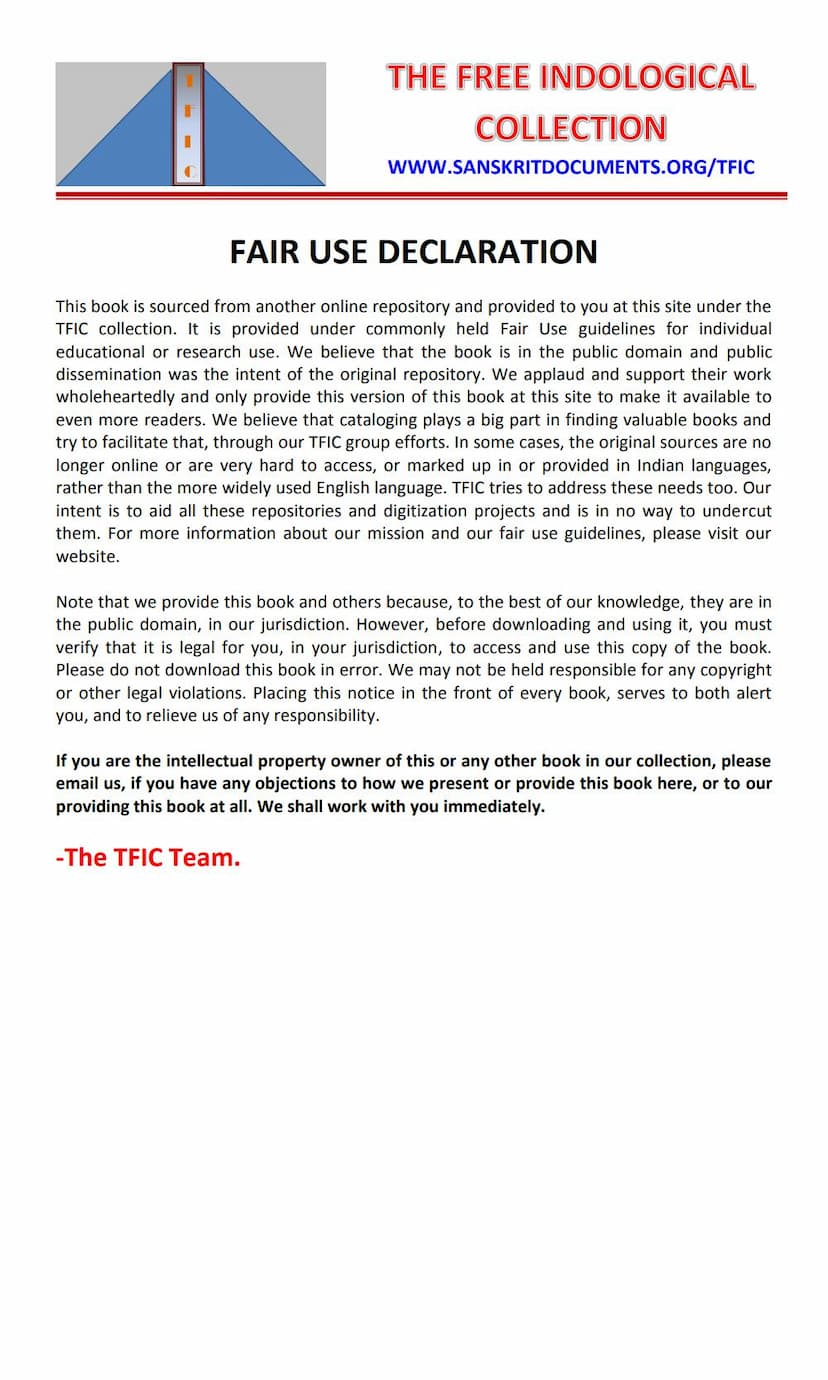Jain Hit Shiksha Part 01
Added to library: September 2, 2025

Summary
This is a summary of the Jain text "Jain Hit Shiksha Part 01" by Kumbhkaran Tikamchand Chopda Bikaner. The text is a collection of devotional songs, teachings, and prayers intended for the spiritual upliftment and guidance of the Jain community.
Key Content and Themes:
-
Devotional Songs (Stavans/Dhals): The book features a significant number of devotional songs (known as "Dhals" or "Stavans") dedicated to the 24 Jain Tirthankaras (Jinas). These songs often describe the virtues, life events, and spiritual qualities of each Tirthankara, encouraging devotion and contemplation.
- Examples include "Shri Chaubis Jin Stavan" (Praise of the 24 Jinas), and individual Dhals for Tirthankaras like Adinath, Ajitnath, Sambhavnath, Abhinandanath, Sumatinath, Padamprabhu, Suparshvanath, Chandrapraabh, Suvidhinath, Sheetalnath, Shreyansnath, Vasupujya, Vimalnath, Anantnath, Dharmanath, Shantnath, Munisuvratnath, Naminath, Arishtanemi, Parshvanath, and Mahavir.
- There are also Dhals praising specific spiritual figures and concepts, such as "Shri Bhikhanji Swami ke Gunaon ki Dhal" (Dhal of the virtues of Shri Bhikhanji Swami, composed by Jayacharya), "Acharya Gunmala" (Garland of Virtues of Acharyas), and "Shri Kalugani ke Gunaon ki Dhal" (Dhal of the virtues of Shri Kalugani).
-
Core Jain Principles and Practices: The text elaborates on fundamental Jain tenets and practices:
- Pancha Parameṣṭhi: The five supreme beings in Jainism (Arhanta, Siddha, Acharya, Upadhyaya, Sadhu) are revered, with detailed descriptions of their virtues and qualities.
- Navkar Mantra: The importance of the Navkar mantra is highlighted, along with the enumeration of the 108 virtues associated with it.
- Samayika: Instructions and recitations for the practice of Samayika (meditative posture/practice) are included, along with the procedure for breaking the fast or vow of Samayika.
- Trikala Sandhya: Mention of the practice of Trikala Sandhya (prayers at three times of the day) suggests its importance.
- Pancha Pad Vandana: The five-fold bowing and veneration are described.
- Pachis Bol: A detailed explanation of the "25 Principles" or categories of Jain philosophy is presented. This section covers topics like the four Gatis (states of existence), the five senses, the six types of bodies, karma, soul states, and the path to liberation.
- Chorasi Lakh Yoni: The concept of the 8.4 million life forms (Yonis) is mentioned, emphasizing the cycle of birth and rebirth.
- Shraddha (Faith): A significant portion is dedicated to explaining the importance of true faith (Shraddha) in Jainism, differentiating it from mere ritualism or blind belief. It stresses the need for correct understanding of the teachings of the Tirthankaras and the guidance of true gurus.
- Terapanth Olakhmana ki Dhal: A Dhal dedicated to understanding and recognizing the tenets of the Terapanth tradition within Jainism.
- Nikspsa (Categories of Existence/Knowledge): An extensive discussion on the four Nikshepas (Nam, Sthapana, Dravya, Bhav) is provided through a series of Dhals. This section aims to clarify the distinction between a name, an symbol, the substance, and the reality, emphasizing the importance of understanding the true essence over mere outward forms.
- Karma and its Effects: The book touches upon the concept of karma and its impact on an individual's life, including the inevitability of its consequences, as illustrated through various stories and teachings. The Dhal "Karma Ni Sijjhaya" emphasizes this point.
- Warnings and Exhortations: Several Dhals act as warnings against worldly attachments, pride, and ignorance. They encourage introspection, detachment, and righteous conduct. Examples include "Chet Chet Nar Kahai Tanai Sattguru" (O Mind, Hear the True Guru) and "Yauvan Dhan Pavna ko Dhal" (Dhal on the fleeting nature of youth and wealth).
- Life Stories and Morals: The text likely incorporates moral stories and teachings from the lives of saints, ascetics, and pious laypeople to illustrate Jain principles and inspire ethical behavior. Examples include "Sudharshan Seth ke Bakhan ko Dhal" (Dhal of the Story of Sudharshan Seth).
-
The "Nikspsa" Section: This is a substantial part of the book, presented in a question-and-answer or explanatory format. It delves deeply into the philosophical categories of Nam (Name), Sthapana (Establishment/Symbol), Dravya (Substance), and Bhav (Reality/Essence). The text explains how these relate to Jain deities, ascetics, and spiritual concepts, highlighting the pitfalls of adhering to mere names or symbols without understanding the underlying reality and virtues. It criticizes the practice of venerating outward forms without inner spiritual realization.
-
Purpose of the Book: The author and compiler express the hope that the book will be beneficial for readers in cultivating correct faith (Samkit), strengthening their spiritual understanding, and ultimately working towards their spiritual welfare and that of others.
Overall Impression:
"Jain Hit Shiksha Part 01" appears to be a foundational text for Jain education, offering a comprehensive introduction to the core beliefs, practices, and devotional aspects of Jainism. It serves as a guide for individuals seeking to understand and live according to Jain principles, with a particular emphasis on the importance of virtuous conduct and genuine spiritual devotion over superficial rituals. The inclusion of numerous Dhals suggests a strong emphasis on devotional singing and chanting as a means of spiritual connection.